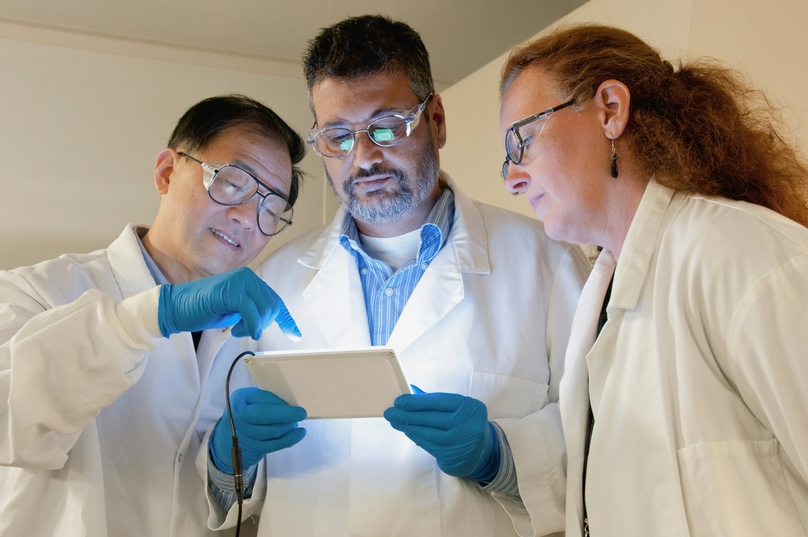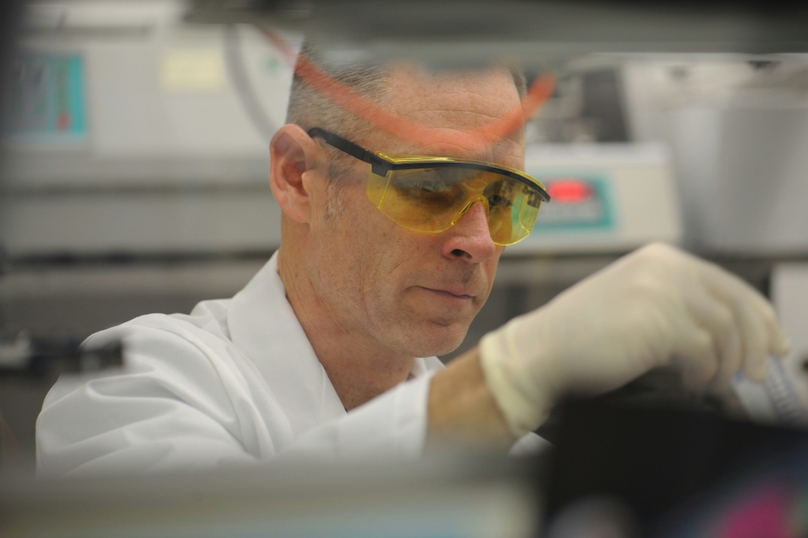The Limits of Traditional Laboratory Operation
For decades, laboratory operations have relied on the same foundation: dedicated scientists, manual recording, and independent instruments. The results speak for themselves — brilliant discoveries, lifesaving diagnostics, and high-precision testing. Yet beneath that success lies an uncomfortable truth: the way data is handled has barely evolved.
In most labs, vital information still moves through spreadsheets, handwritten notes, and static PDFs. Each process works in isolation. A single mislabeled tube or forgotten entry can create hours of troubleshooting and lost samples. Manual tracking not only slows productivity but also introduces silent risks that surface later during audits or result reviews.
The manual bottleneck becomes even clearer when labs try to scale. What works for ten samples breaks down at a thousand. Transferring results from instrument to report means endless copying, formatting, and verification. Human oversight becomes the choke point.
Beyond efficiency, regulatory compliance adds another layer of strain. Auditors now expect transparent, timestamped digital trails. Paper logs and Excel sheets can’t provide real-time version control or authentication — both of which are mandatory for CFR Part 11 compliance.
The outcome is a fragile workflow: fast enough to keep up with today, but unprepared for tomorrow. In an era driven by artificial intelligence, precision medicine, and global collaboration, laboratories need systems that are traceable, searchable, and intelligent. Manual methods simply cannot deliver that level of control.
The Limitations of Legacy Laboratory Management Software
To escape paper chaos, many labs adopted early Laboratory Information Management Systems (LIMS) or simple database tools years ago. They brought order to workflows at the time, but technology has since outgrown them. What once felt modern now quietly restricts progress.
Outdated architecture
Legacy systems were built for an era when on-premise servers ruled. They depend on local installations, limited user access, and rigid update cycles. In a world of distributed research teams and remote diagnostics, those constraints turn into walls.
Poor integration
Older lab management software rarely speaks the language of new instruments or cloud analytics. When each device outputs data differently, the system struggles to unify results. Analysts are forced to export, clean, and re-upload files manually — defeating the purpose of automation.
Limited scalability
Modern laboratories generate massive datasets: next-generation sequencing, imaging, multi-omics, and real-time quality metrics. Traditional systems slow down or even crash under that weight. Their storage models simply weren’t designed for continuous, high-volume data streaming.
Maintenance burden
Maintaining outdated software drains budgets. Local servers demand constant IT support, and vendor updates often require downtime or expensive custom patches. Instead of focusing on research, teams spend time maintaining infrastructure.
Closed data silos
Most critically, legacy systems trap information. They may store data securely, but not in ways that artificial intelligence can use. Machine learning models rely on standardized, structured, and interoperable data — something older databases rarely support.
As the diagnostics industry transitions to AI-powered decision-making, these limitations become deal-breakers. A lab running legacy systems can’t simply “add AI.” It needs a foundation capable of sharing, learning, and evolving with technology.
The New Era of AI LIMS
The next generation of laboratory management has already arrived. AI-powered LIMS (AI LIMS) systems are designed from the ground up to handle the complexity, scale, and intelligence demands of modern science. They combine traditional workflow automation with predictive analytics, machine learning, and natural-language interaction — turning data into insight instead of just storage.
From management to intelligence
A conventional LIMS records what happens in the lab. An AI LIMS anticipates what should happen next. It studies workflow patterns, flags anomalies, and suggests process improvements automatically. For instance, it can identify that a centrifuge frequently delays results and recommend rescheduling or maintenance before the next bottleneck.
Core capabilities of AI-ready systems
Automated data validation: The system reviews new entries, checking them against expected ranges or instrument calibration data.
Predictive maintenance: By tracking usage metrics, the LIMS warns when instruments require servicing, preventing costly downtime.
AI-driven recommendations: Based on historical experiment data, the software suggests optimized methods or reagents.
Smart quality control: AI continuously scans datasets for irregularities, ensuring consistent accuracy across runs.
Conversational assistance: With an integrated AI Agent, users can request data, retrieve reports, or trigger workflows through natural language — no scripting needed.
Cloud-native architecture
Unlike legacy LIMS, cloud-based AI LIMS platforms allow real-time collaboration across locations. Teams in different regions can access the same project data securely, enabling global research without the pain of file sharing or local backups. Updates roll out instantly, and scalability is nearly limitless.
Compliance built-in
Modern AI LIMS solutions incorporate compliance frameworks at their core. Features like electronic signatures, user authentication, and full audit trails ensure adherence to HIPAA, SOC 2, GDPR, and 21 CFR Part 11 — automatically. No additional plugins or manual record-keeping are required.
Human + AI collaboration
AI doesn’t replace scientists; it amplifies them. Routine calculations, repetitive data checks, and inventory predictions happen behind the scenes. Scientists stay focused on innovation — interpreting data, developing hypotheses, and pushing research forward. The result is a smarter, calmer, and more creative laboratory.
AI LIMS represents not just a software upgrade, but a complete shift in laboratory philosophy: from reactive management to predictive, data-driven excellence.
The Checklist: Building an AI-Ready Laboratory
Transitioning to an AI-ready environment isn’t a single switch — it’s a structured journey. Below is a practical checklist to help laboratories assess their readiness and plan the next step.
1. Data structure and accessibility
• Centralized data repository: All samples, results, and instrument outputs stored in a single cloud-based LIMS.
• Standardized formats: Use consistent file types (CSV, JSON, XML) and metadata tagging to prepare for machine learning integration.
• Instrument connectivity: Ensure that analyzers, freezers, sequencers, and automation equipment can feed data directly into the LIMS through APIs or drivers.
• Version control: Every record must carry a timestamp and user ID to preserve data lineage.
2. Infrastructure readiness
• Cloud or hybrid setup: Enables secure data access across teams while reducing local server dependency.
• Role-based permissions: Assign access levels by user type — technicians, analysts, auditors — to maintain compliance.
• Automated backup and recovery: Continuous data protection with encrypted redundancy.
• Scalable storage: Ensure storage expansion without disrupting operations, a must for image and sequencing data.
3. Operational and cultural readiness
• Team training: Provide hands-on sessions for digital workflows, data governance, and AI fundamentals.
• Defined data governance policy: Clarify how data is labeled, validated, and shared between departments.
• Digital champions: Designate early adopters who guide colleagues during the transition.
• Change communication: Keep the process transparent — resistance drops when staff understand the “why.”
4. Integration roadmap
• API-driven connectivity: Choose a LIMS that integrates with existing ELNs, automation software, and analytics tools.
• AI use case pilots: Start small — predictive maintenance, reagent forecasting, or anomaly detection — to demonstrate quick wins.
• Iterative rollout: Migrate one workflow at a time to avoid operational disruption.
5. Compliance and security foundation
• Audit trails: Automatically capture every modification, approval, and result release.
• Electronic signatures: Replace paper validations with compliant e-sign processes.
• Encryption and SOC 2 certification: Protect data integrity at every layer.
• Regulatory alignment: Ensure the LIMS meets or exceeds HIPAA, GDPR, and 21 CFR Part 11 standards out of the box.
From Legacy to Leadership: The Value of LIMS Transition
Becoming AI-ready isn’t about chasing buzzwords; it’s about securing the laboratory’s future.
A successful LIMS transition transforms daily operations:
Turnaround times drop.
Error rates shrink.
Audits shift from stressful to routine.
Teams gain visibility across every sample and experiment.
More importantly, a digital foundation allows innovation to flourish. Once a lab’s data is clean, structured, and searchable, applying AI becomes straightforward — whether for advanced analytics, automation, or real-time decision support.
With solutions like Genemod’s AI LIMS, laboratories can evolve without disruption. The platform unites inventory tracking, experiment documentation, and AI insights within a single, cloud-secure workspace. Migration assistance, training, and ongoing support ensure the change feels guided rather than overwhelming.
In short, AI-readiness begins with digital clarity — and that starts with the right LIMS.
The Future: Predictive and Connected Laboratories
Tomorrow’s labs won’t just record data; they’ll anticipate it. An AI-ready laboratory can forecast reagent shortages, detect anomalies before they affect results, and even predict experiment outcomes based on historical patterns.
In diagnostics, that might mean identifying potential false negatives before release. In manufacturing, it could prevent contamination events by predicting deviations in raw material quality. Across research fields, AI transforms reactive troubleshooting into proactive excellence.
The foundation of this vision is always the same: a unified, intelligent LIMS that feeds reliable data into the AI engine. Without it, predictions remain guesses; with it, they become breakthroughs.
Conclusion
The laboratories that thrive in the next decade will share one trait — digital readiness. They will have replaced manual entry with automation, isolated software with integrated systems, and scattered files with structured data pipelines.
If your lab still operates on spreadsheets or legacy software, now is the time to move. Becoming an AI-ready lab is not a distant ambition; it’s the next logical step toward faster results, stronger compliance, and smarter science.
Genemod’s AI LIMS was built for this transition — merging automation, compliance, and intelligence into one platform that evolves with your lab’s needs.
See how your lab can become AI-ready. Book a personalized demo with Genemod.


















